History
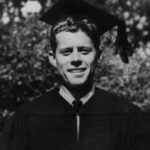
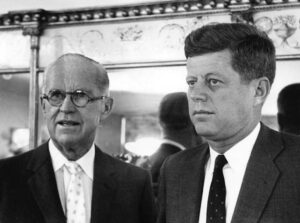 It’s not often that a young man “pulls strings” in order to go to war. Most men would rather not go to war, and some will even try to “pull strings” to get out of going. John F Kennedy, who had some health problems, and an old back injury from his college football days, was turned down for the Navy, but his dad managed to pull some strings for his son, who really wanted to go into the navy. Young was desperate, and like most parents, his father wanted to help fulfill that dream. So in 1941, Kennedy’s politically connected father, Joseph Kennedy used his influence to get his sin, John “Jack” into the service. Of course, Joseph might have been thinking ahead to future political maneuvers when he pushed for a military career for his son. Once in the Navy, Kennedy volunteered for PT (motorized torpedo) boat duty in the Pacific in 1942.
It’s not often that a young man “pulls strings” in order to go to war. Most men would rather not go to war, and some will even try to “pull strings” to get out of going. John F Kennedy, who had some health problems, and an old back injury from his college football days, was turned down for the Navy, but his dad managed to pull some strings for his son, who really wanted to go into the navy. Young was desperate, and like most parents, his father wanted to help fulfill that dream. So in 1941, Kennedy’s politically connected father, Joseph Kennedy used his influence to get his sin, John “Jack” into the service. Of course, Joseph might have been thinking ahead to future political maneuvers when he pushed for a military career for his son. Once in the Navy, Kennedy volunteered for PT (motorized torpedo) boat duty in the Pacific in 1942.
“Jack” Kennedy quickly worked to move himself up in rank, and soon he was Lieutenant John F. Kennedy. July 1943 found Lieutenant Kennedy and the crew of PT 109 in combat near the Solomon Islands. People often think that being in the Navy or the Air Force is somehow safer than the Army or Marines, but the reality is that any position in a war 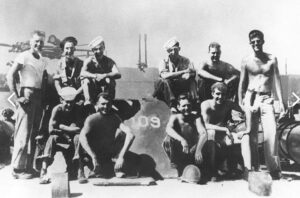
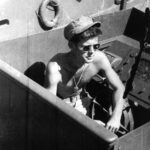 can prove to be dangerous. On August 2, 1943, the middle of the night, Kennedy’s boat was rammed by a Japanese destroyer and caught fire. In the ensuing explosion, several of Kennedy’s shipmates were blown overboard into a sea of burning oil. With no regard for his own life, Kennedy dove in to rescue three of the crew and in the process swallowed some of the toxic mixture. Kennedy always blamed his chronic stomach problems on that incident. The ordeal was not quickly over, and for 12 hours, Kennedy and his men clung to the wrecked hull. Finally, he ordered them to abandon ship. Kennedy and the other good swimmers placed the injured on a makeshift raft. They took turns pushing and towing the raft four miles to safety on a nearby island.
can prove to be dangerous. On August 2, 1943, the middle of the night, Kennedy’s boat was rammed by a Japanese destroyer and caught fire. In the ensuing explosion, several of Kennedy’s shipmates were blown overboard into a sea of burning oil. With no regard for his own life, Kennedy dove in to rescue three of the crew and in the process swallowed some of the toxic mixture. Kennedy always blamed his chronic stomach problems on that incident. The ordeal was not quickly over, and for 12 hours, Kennedy and his men clung to the wrecked hull. Finally, he ordered them to abandon ship. Kennedy and the other good swimmers placed the injured on a makeshift raft. They took turns pushing and towing the raft four miles to safety on a nearby island.
Their ordeal still wasn’t over. For six days, Kennedy and his crew waited on the island for rescue. There was little to eat on the island, but the men survived by drinking coconut milk and rainwater until native islanders discovered the sailors and offered food and shelter. While they waited, Kennedy tried every night to signal other US Navy ships in the area. In addition, Kennedy scrawled a message on a coconut husk and gestured to the islanders to take it to a nearby PT base at Rendova. Finally, on August 8, a Navy patrol boat picked up the survivors of PT-109.
The men were taken to the hospital to recuperate, and on June 12, 1944, while Kennedy was in the hospital recuperating from back surgery, he received the Navy and Marine Corps medal for “courage, endurance, and 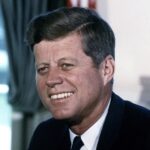
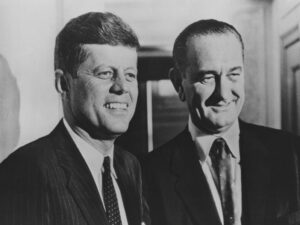 excellent leadership [that] contributed to the saving of several lives and was in keeping with the highest traditions of the United States Naval Service.”
excellent leadership [that] contributed to the saving of several lives and was in keeping with the highest traditions of the United States Naval Service.”
Of course, the rest is history. John F Kennedy went on to become the 35th President of the United States, and on November 22, 1963, Kennedy was assassinated in Dallas. His vice president, Lyndon B Johnson, assumed the presidency upon Kennedy’s death.
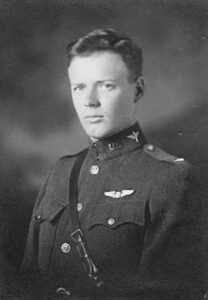
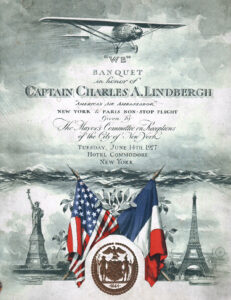 I think most people have heard of Charles Lindbergh, who was born on February 4, 1902, in Detroit, Michigan, was an American aviator celebrated for conducting the first solo, non-stop flight across the Atlantic Ocean. We all like to think about the amazing accomplishments that have marked our history books. When airplanes were invented, there was little chance that records wouldn’t be set and advances made. Man has always tried to improve on things.
I think most people have heard of Charles Lindbergh, who was born on February 4, 1902, in Detroit, Michigan, was an American aviator celebrated for conducting the first solo, non-stop flight across the Atlantic Ocean. We all like to think about the amazing accomplishments that have marked our history books. When airplanes were invented, there was little chance that records wouldn’t be set and advances made. Man has always tried to improve on things.
Lindbergh’s famous flight took place in 1927, when he flew the Spirit of Saint Louis from New York to Paris. The flight took 33.5 hours and made Lindbergh an international hero, but I can only imagine how he felt as he was flying along. He was doing something no one had ever done before!! I suppose there is always that first time for everything new, but Lindbergh had 33.5 hours to think about that.
Fame has a way of giving a person a lot of pull in whatever area they might try to use that influence, and Lindbergh 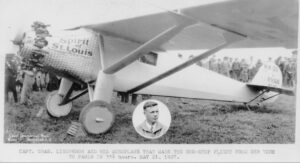
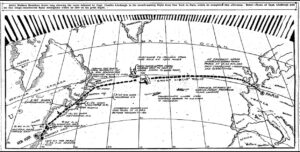 was interested in promoting commercial aviation and air mail services. He was especially instrumental in the development of transatlantic flights, pushing for the establishment of routes and infrastructure that would enable commercial aviation to thrive.
was interested in promoting commercial aviation and air mail services. He was especially instrumental in the development of transatlantic flights, pushing for the establishment of routes and infrastructure that would enable commercial aviation to thrive.
Unfortunately, fame also makes people into targets. For Lindbergh, being a target came in the form of his son, Charles Lindbergh Jr being kidnapped and, while Lindbergh paid the $50,000 ransom, his son was found murdered in 1932, which resulted in what was known as the “Crime of the Century.” Lindbergh’s influence now took a different 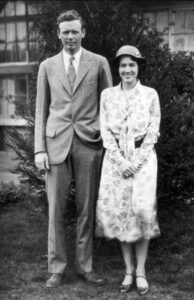
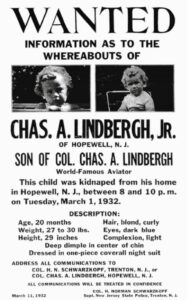 turn, in the form pushing for the Lindbergh Law or Federal Kidnapping Act, making kidnapping a federal crime in the United States.
turn, in the form pushing for the Lindbergh Law or Federal Kidnapping Act, making kidnapping a federal crime in the United States.
While debated by the loss of his son, Lindbergh knew that he must go on…life must go on. He went on to make contributions to various fields, including conservation and literature. He also developed a keen interest in environmental issues and worked with various institutions to advocate for the protection of wildlife and habitats. In addition to those things, he authored several books, including “The Spirit of Saint Louis,” which recounts his historic flight. That book won the Pulitzer Prize in 1954. Charles Lindbergh passed away on August 26, 1974, of Lymphoma at the age of 72.
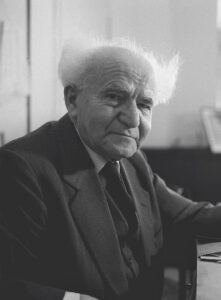
 Since the earliest beginnings of Israel, the Arab community has been protesting its existence and trying to remove it from the face of the Earth. I don’t particularly understand what their problem uis. Given the tiny size of Israel compared to the vastness of the Arab nations, why is it so hard to allow them to live in peace? It is, of course a Holy War situation that is unlikely to go away for as long as time continues.
Since the earliest beginnings of Israel, the Arab community has been protesting its existence and trying to remove it from the face of the Earth. I don’t particularly understand what their problem uis. Given the tiny size of Israel compared to the vastness of the Arab nations, why is it so hard to allow them to live in peace? It is, of course a Holy War situation that is unlikely to go away for as long as time continues.
Israel had been a nation way, way back, but when they were taken into captivity, they were scattered to many nations. Once they were freed, they traveled to Israel (I think most people know the Exodus story). Of course, their existence was fought over again and again, finally leading up to the Holocaust. When World War II ended, many of the Jewish people again moved to and populated the Israeli land, but it wasn’t until May 14, 1948, that David Ben-Gurion, the head of the Jewish Agency, proclaimed the establishment of the State of Israel. United States President Harry S Truman recognized the new nation on the same day. Since that time, there have been multiple wars and continuing conflicts that have threatened the existence of the Israeli state.
One such war was the Six-Day War, also called June War or Third Arab-Israeli War or Naksah. It was a short-lived war that took place from June 5, 1967 to June 10, 1967. It was the third of the Arab-Israeli wars. The first took place almost immediately after they were declared a state. The Israeli people have learned to fight for survival all their lives, vowing never to allow another Holocaust to be carried out. Israel’s decisive victory in the Six-Day War included the capture of the Sinai Peninsula, Gaza Strip, West Bank, Old City of Jerusalem, and Golan Heights. Of course, things didn’t end there. The fact that these territories belonged to Israel has been a major point of contention in the Arab-Israeli conflict sin that time.
The Six-Day War had precursors, as most wars do. Prior to the start of the war, the Palestinian guerrilla groups based in Syria, Lebanon, and Jordan randomly began attacking Israel, basically lobbing missiles at them, leading to costly 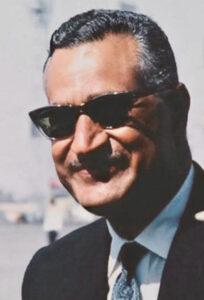
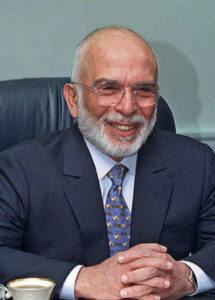 Israeli reprisals. Then, in November 1966 an Israeli strike on the village of Al-Sam in the Jordanian West Bank left 18 dead and 54 wounded, and during an air battle with Syria in April 1967, the Israeli Air Force shot down six Syrian MiG fighter jets. Soviet intelligence reports in May claimed that Israel was planning a campaign against Syria, and although these claims were inaccurate, the accusations further heightened tensions between Israel and its Arab neighbors.
Israeli reprisals. Then, in November 1966 an Israeli strike on the village of Al-Sam in the Jordanian West Bank left 18 dead and 54 wounded, and during an air battle with Syria in April 1967, the Israeli Air Force shot down six Syrian MiG fighter jets. Soviet intelligence reports in May claimed that Israel was planning a campaign against Syria, and although these claims were inaccurate, the accusations further heightened tensions between Israel and its Arab neighbors.
During this time, Egyptian President Gamal Abdel Nasser had come under sharp criticism for his refusing to become involved with Syria and Jordan against Israel. He was accused of hiding behind the United Nations Emergency Force (UNEF) stationed at Egypt’s border with Israel in the Sinai. Under pressure, he moved to unambiguously demonstrate support for Syria on May 14, 1967. Nasser mobilized Egyptian forces in the Sinai on May 18, 1967 and formally requested the removal of the UNEF stationed there. On May 22, 1967, he closed the Gulf of Aqaba to Israeli shipping, thus instituting an effective blockade of the port city of Elat in southern Israel. On May 30, 1967, King Hussein of Jordan arrived in Cairo to sign a mutual defense pact with Egypt, placing Jordanian forces under Egyptian command. Iraq joined the alliance shortly thereafter.
As Israel became aware of the mobilization of its Arab neighbors, early on the morning of June 5, 1967, Israel took preemptive action and staged an air assault that destroyed more than 90 percent Egypt’s air force on the tarmac. A similar air assault incapacitated the Syrian air force. Without cover from the air, the Egyptian army was left vulnerable to attack. The domination in this war became apparent right away, and within three days the Israelis had achieved an overwhelming victory on the ground, capturing the Gaza Strip and all of the Sinai Peninsula up to the east bank of the Suez Canal.
Israel warned Jordan’s King Hussein to stay out of the conflict, but they disregarded the warning, and eastern front was also opened on June 5, 1967, when Jordanian forces began shelling West Jerusalem only to face a crushing 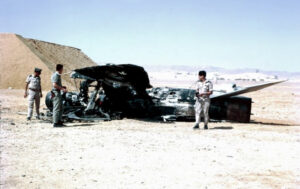
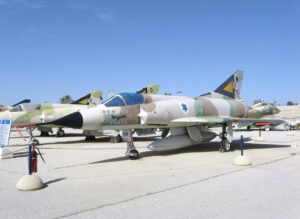 Israeli counterattack. On June 7, 1967, Israeli forces drove Jordanian forces out of East Jerusalem and most of the West Bank. By June 10, 1967, the war was over and Israel was the obvious winner. It seems to me that the Arab nations should heed the warnings of history, and leave Israel alone, but I suppose that is unlikely. Nevertheless, Israeli land belongs to the Jewish people by the promise of God and they would do well to let it go.
Israeli counterattack. On June 7, 1967, Israeli forces drove Jordanian forces out of East Jerusalem and most of the West Bank. By June 10, 1967, the war was over and Israel was the obvious winner. It seems to me that the Arab nations should heed the warnings of history, and leave Israel alone, but I suppose that is unlikely. Nevertheless, Israeli land belongs to the Jewish people by the promise of God and they would do well to let it go.
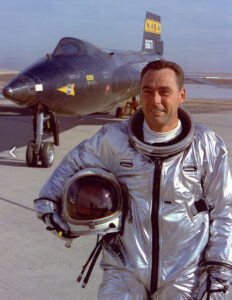
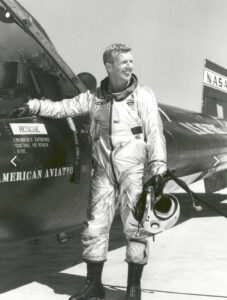 The first official space flight occurred on April 12, 1961, when Soviet astronaut Yuri Alekseyevich Gagarin, a Soviet pilot and cosmonaut who, aboard the first successful crewed spaceflight, became the first human to journey into outer space. Traveling on Vostok 1, Gagarin completed one orbit of Earth on 12 April 1961. While that was the first official manned space flight, there were other times that man touched space.
The first official space flight occurred on April 12, 1961, when Soviet astronaut Yuri Alekseyevich Gagarin, a Soviet pilot and cosmonaut who, aboard the first successful crewed spaceflight, became the first human to journey into outer space. Traveling on Vostok 1, Gagarin completed one orbit of Earth on 12 April 1961. While that was the first official manned space flight, there were other times that man touched space.
The North American X-15 was an experimental US single seat rocket powered airplane that was taken aloft by a B-52 bomber acting as its “mother ship” and released to test extremely high speed and extremely high-altitude flight. The first such flight took place on June 8, 1959.
The hypersonic rocket-powered aircraft known as the North American X-15, was operated by the United States Air Force and the National Aeronautics and Space Administration as part of the X-plane series of experimental aircraft. While it didn’t exactly go into space, the X-15 set speed and altitude records in the 1960s, reaching the edge of outer space and returning with valuable data used in aircraft and spacecraft design, making it a precursor to the spacecraft of today. The X-15’s highest speed, 4,520 miles per hour , was achieved on October 3, 1967, when William J Knight flew at Mach 6.7 at an altitude of 102,100 feet or 19.34 miles. This set the official world record for the highest speed ever recorded by a crewed, powered aircraft, and it remains unbroken to this day.
While pilot, William Knight flew an all-time record speed of Mach 6.7 (4520 miles per hour), the fastest speed flown by a powered and manned piloted aircraft, in 1967, his flight wasn’t the first record setting flight in the X-15. This incredible speed was not even close to the maximum potential of the X-15. A typical commercial passenger jet flies at a speed of about 460 – 575 miles per hour, when cruising at about 36,000 feet, which figures to about 75-85% of the speed of sound. I can’t imagine going any faster than that, much less wrap my head around more than 4520 miles per hour!!
In 1963, pilot Joe Walker flew his X-15 into the history books by flying it to a record altitude of 67 miles and achieving a speed of almost Mach 5 (3794 miles per hour). While there is no sharp physical boundary that marks the end of atmosphere and the beginning of space, it is generally marked at the Karman line, and for purposes of space flight defined as an altitude of 60 miles, although some place the line at 50 miles above Earth’s mean sea level.
The X-15 program continued until 1968, when the rocket planes were retired. On notable pilot was Neil Armstrong, who was also the first man to walk on the Moon, of course. Armstrong made 7 flights in the speedy rocket plane. Also interesting to note is the fact that during the X-15 program, 12 pilots flew a combined 199 flights. Of the 12 pilots, 8 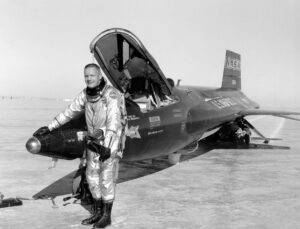
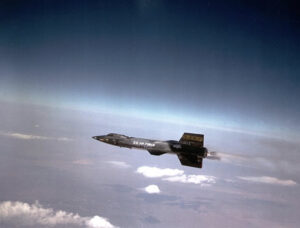 pilots flew a combined 13 flights that exceeded the altitude of 50 miles, thus qualifying these pilots as being astronauts!! Of those 13 flights, two (flown by the same civilian pilot) met the FAI (Féderátion Aéronautique Internationale) definition of 62 miles of outer space. The 5 Air Force pilots qualified for military astronaut wings immediately, while the 3 civilian pilots were eventually awarded NASA astronaut wings in 2005, 35 years after the last X-15 flight.
pilots flew a combined 13 flights that exceeded the altitude of 50 miles, thus qualifying these pilots as being astronauts!! Of those 13 flights, two (flown by the same civilian pilot) met the FAI (Féderátion Aéronautique Internationale) definition of 62 miles of outer space. The 5 Air Force pilots qualified for military astronaut wings immediately, while the 3 civilian pilots were eventually awarded NASA astronaut wings in 2005, 35 years after the last X-15 flight.
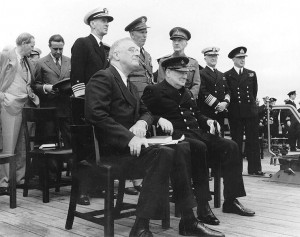
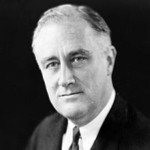
 In a military operation, especially as part of a war, absolute secrecy is vital. Those involved with the planning have to know that they can trust everyone who is around them. One of the most important operations of World War II was the D-Day attack…Operation Overlord. Success was vital, and failure was simply not an option, no matter how many men were lost. The attack on Pearl Harbor had finally drawn the United States into World War II, and now we were in it to win it.
In a military operation, especially as part of a war, absolute secrecy is vital. Those involved with the planning have to know that they can trust everyone who is around them. One of the most important operations of World War II was the D-Day attack…Operation Overlord. Success was vital, and failure was simply not an option, no matter how many men were lost. The attack on Pearl Harbor had finally drawn the United States into World War II, and now we were in it to win it.
The success of any mission is found in the planning, so in August 1943, Franklin D Roosevelt and Winston Churchill met in Quebec for the first of two meetings code-named “Quadrant.” Technically, the meeting was the first of two “Quebec Conferences.” The meetings couldn’t even officially talk about the name of the actual operation, “Operation Overlord, which was later known as D-Day to the world. The Americans and the Brits had differences of opinion as to just how the operation was to be handled, but in order to make this operation work, they would have to be in complete agreement, and the mission would have to be kept completely covert!! No one could know the details.
Everyone, from the top men down to the paper supplier was screened to make sure of their loyalties. No stone was left unturned. If any information was leaked, thousands of men could die, and the fate of the world could have been severely compromised. Nevertheless, something was “missed” somehow. A young Canadian named Émile Couture was in charge of stationery supplies that fateful day, and in reality, he had no intention of being a traitor or playing any other nefarious part in the leak of information into the operation. Nevertheless, he managed to walk out of those meetings with the tactical plans for the invasions. It wasn’t even accidental…exactly.
Roosevelt and Churchill were excellent strategists, and their very detailed plans were perfectly laid out. The operation was going to be an amazing success. Now, all they had to do was to keep everything secret until the actual day, as yet unnamed, of the operation. The plans included detailed listings of Allied military assets to be used in the landings…the number of planes, combat cars, ships, and ground soldiers. They only had to keep it very quiet, because the leak of this information could have turned the tide of the war in favor of the Axis powers, and had that happened, our world would be vastly different even from the strange world we are experiencing today. Sergeant Major Émile Couture had been tasked with cleaning up after the meetings and instructed to make sure nothing was left behind.
Couture was doing his job in a meticulous fashion, but while cleaning an office on the third floor of the hotel, he discovered a leather portfolio that was inscribed “Churchill-Roosevelt, Quebec Conference, 1943. Maybe he thought it was just an empty portfolio, and so thought he could actually have an amazing souvenir of such a monumental meeting. Just think of the stories he could tell his children and grandchildren about the time he got to help out with such an important meeting between two of the most important men if his time. History doesn’t really tell us what he was thinking, but he decided to keep the portfolio as a souvenir without realizing what was actually in the portfolio. 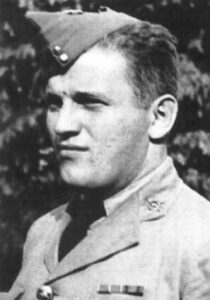 Couture walked out of the Château Frontenac without anyone being any the wiser and drove to the cottage where he was living with his cousins in Lac-Beauport just a few miles outside of Quebec City. Then he took time to examine his “treasure” only to find that he could actually be tried for treason. Couture was more than frightened. He was terrified, and he hid the files under his mattress overnight.
Couture walked out of the Château Frontenac without anyone being any the wiser and drove to the cottage where he was living with his cousins in Lac-Beauport just a few miles outside of Quebec City. Then he took time to examine his “treasure” only to find that he could actually be tried for treason. Couture was more than frightened. He was terrified, and he hid the files under his mattress overnight.
In the morning, knowing that he would have to face the music, he took the portfolio and its files to his superior, Brigadier Edmond Blais. Blais told Couture to go home and wait. He would be dealt with in the morning. Couture could have been put in prison for the remainder of the war in order to make certain that he did not leak the information he had seen. He was, after all, a low-ranking soldier, and shouldn’t have access to such top-secret information. Instead, he was sent home after being questioned by Scotland Yard and the FBI.
Whether Couture was terrified to say anything, or just an honorable soldier, he never leaked the information he had seen. Blais must have liked Couture, because he sent a letter on August 28, 1943, in which he recommended the Sergeant Major Émile Couture be awarded “the greatest accomplishment that can be given an NCO (non-commissioned officer).
On June 6, 1944, the Allies staged the largest amphibious military landing in history. Always remembered as D-Day, Operation Overlord saw 150,000 troops hit the beaches of Normandy, push back the German army and set the course for the eventual victory of the Allied forces. The secret of D-Day was kept, and the operation went off without a hitch.
Couture was rewarded for his discretion during a ceremony in September 1944, when he was commended for his actions by being granted a British Empire Medal. During the ceremony, there was no mention of what Couture had actually done to merit the award other than “services rendered.” I wonder if anyone thought that odd. Nevertheless, they really couldn’t tell, because it would have been embarrassing to the military for the public to see how easily someone walked out of the hotel with top secret documents.
Couture’s daughter, Anne Couture, insists that her father never told anyone. But someone did leak the story, and Couture became the center of the media’s attention. He gave several interviews over time, but he never told anyone whose office he had been cleaning when he found the documents or who he thought might have left them there. Though, Anne admits, he may have told her mother. If he did, Georgette Larochelle isn’t telling anyone, and in an effort to clear the record concerning her husband’s involvement in the whole incident. She has turned over all the memorabilia and documentation the family has kept over the years. It has all been donated to the Royal Museum and has been displayed in an exhibit since the 75th anniversary of the 2nd 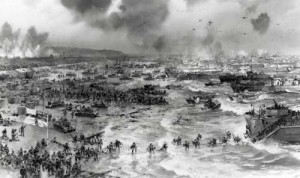
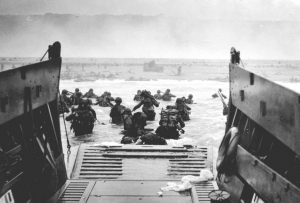 Quebec Conference.
Quebec Conference.
According to the museum’s director and curator, the documents are “convincing and some of the artifacts are considered invaluable” to the museum. He called the personal items which were specially made for the conference, “a great witness of this event of national significance.”
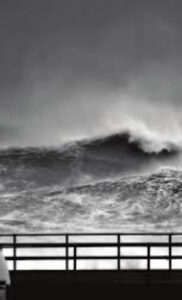 The normal hurricane season is from June 1 to November 30, and since we have our first hurricane in the Gulf of Mexico right now, it looks like it’s right on time. Nevertheless, for places like New York, where it is normally a little cooler, the hurricane season starts a little later, and may not really arrive at all. However, on June 4, 1825, a rare early hurricane arrived, moving off the East Coast and tracking south of New York. The hurricane caused several ship wrecks, and killed seven people.
The normal hurricane season is from June 1 to November 30, and since we have our first hurricane in the Gulf of Mexico right now, it looks like it’s right on time. Nevertheless, for places like New York, where it is normally a little cooler, the hurricane season starts a little later, and may not really arrive at all. However, on June 4, 1825, a rare early hurricane arrived, moving off the East Coast and tracking south of New York. The hurricane caused several ship wrecks, and killed seven people.
The National Hurricane Center, states that on average, hurricane winds have impacted the New York City area every 19 years, and major hurricanes, of a Category 3 or higher, only every 74 years. The highest hurricane reading, Category 5 hurricane is not expected to occur there at all, because of the climate conditions there.
Nevertheless, on June 4, 1825, forming ahead of what is now considered hurricane season, a severe tropical storm surprised the Atlantic seaboard from Florida to New York City. At that time, they did not have the prediction capabilities, and this storm was first sighted near Santo Domingo on May 28th. It moved across Cuba on June 1st, with gale force winds, 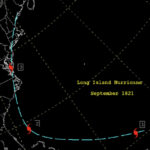 beginning at Saint Augustine, and approaching US soil on the June 2nd, and impacting Charleston, North Carolina on June 3rd.
beginning at Saint Augustine, and approaching US soil on the June 2nd, and impacting Charleston, North Carolina on June 3rd.
The tide in North Carolina rose six feet at New Bern and fourteen feet at Adams Creek. As the tide rushed in, more than 25 ships were driven ashore at Ocracoke, 27 near Washington, and also some at New Bern. The plantations on the coastal areas near the South River were inundated with water, causing a heavy loss of crops and livestock. New Bern experienced heavy damage near the waterfront.
The storm pummeled Norfolk, with horrific force for 27 hours as the storm passed by to the east beginning on the 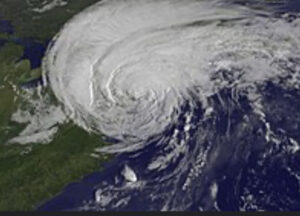 morning of June 3rd. The wind was relentless, uprooting trees as it went. At noon on June 4th, stores on the wharves were flooded in a surge up five feet deep. High winds howled through the Washington DC area. The storm then moved northeast past Nantucket on June 5th.
morning of June 3rd. The wind was relentless, uprooting trees as it went. At noon on June 4th, stores on the wharves were flooded in a surge up five feet deep. High winds howled through the Washington DC area. The storm then moved northeast past Nantucket on June 5th.
The storm reminded many people of the September gale of 1821, except that the September gale would have been much more common. There haven’t been many early June hurricanes in that area since 1825, but there have been a number of hurricanes to hit the area since, including Hurricane Sandy, which did much damage in New York City, including the subway area.
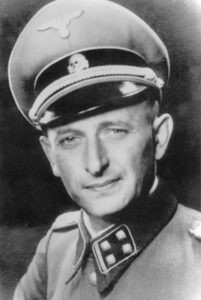 Following the end of World War II, many members of the Third Reich fled Germany, and relocated to Argentina this had all been planned as it became more and more clear that the Nazi Regime would not be successful. The ultimate plan was to lay low for a while, and then form a new Third Reich, or more likely the Fourth Reich. The main figures of the Third Reich were given new identities and smuggled out as soon as they could. It is unknown just exactly how many made it out, but files discovered in Argentina reveal the names of 12,000 Nazis who lived there in the 1930s, many of whom had Swiss bank accounts.
Following the end of World War II, many members of the Third Reich fled Germany, and relocated to Argentina this had all been planned as it became more and more clear that the Nazi Regime would not be successful. The ultimate plan was to lay low for a while, and then form a new Third Reich, or more likely the Fourth Reich. The main figures of the Third Reich were given new identities and smuggled out as soon as they could. It is unknown just exactly how many made it out, but files discovered in Argentina reveal the names of 12,000 Nazis who lived there in the 1930s, many of whom had Swiss bank accounts.
The Jewish people were understandably furious at not only the atrocities that their people had been subjected to, but the fact that with the escape, the fact is that many of the Nazi criminals would never answer for what they did, much less be punished for those atrocities. Nevertheless, the initial intent was to seek justice.
So, on December 13, 1949, Mossad was established. It later became the Institute for Intelligence and Special Operations. While Mossad has many uses today, it was primarily designed to go out and get the war criminals who were in hiding in Argentina and other parts of South America, 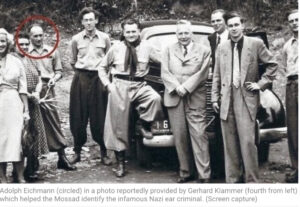 where there was no extradition. Mossad planned to go in without authorization, kidnap the Nazi war criminals, and take them to Israel to stand trial.
where there was no extradition. Mossad planned to go in without authorization, kidnap the Nazi war criminals, and take them to Israel to stand trial.
Some people may assume that Israel’s vaunted Mossad intelligence service devoted a great deal of energy to hunting for Nazis to seek revenge for the Holocaust. That was not the case. The desire to bring the murderers of Jews to justice was not deemed as important to Israel’s leaders in the early years of statehood as more pressing issues directly effecting the nation’s security. One of those issues, was preventing Nazis who went to Egypt from aiding in Nasser’s development of missile technology.
There were a few of the war criminals that the Mossad brought to Justice. One well known criminal was Adolf Eichmann, the man who engineered the Final Solution. His “contribution” to the atrocity that was the Holocaust was one of the most heinous. In 1960, Mossad tracked Eighmann to his home in Argentina, kidnapped him, and brought  him to trial in Israel. He was convicted of war crimes and was actually the only person ever sentenced to death in Israel. The Argentinian government was furious because their no extradition policy was violated by Mossad. The immediately demanded that Israel return Eichmann, and then asked for reparations for Eichmann’s seizure by Mossad agents in Buenos Aires. Nevertheless, on August 2, 1969 the dispute was resolved by Israel keeping Eichmann, but acknowledging that Argentina’s fundamental rights had been infringed upon. No further repercussions were given.
him to trial in Israel. He was convicted of war crimes and was actually the only person ever sentenced to death in Israel. The Argentinian government was furious because their no extradition policy was violated by Mossad. The immediately demanded that Israel return Eichmann, and then asked for reparations for Eichmann’s seizure by Mossad agents in Buenos Aires. Nevertheless, on August 2, 1969 the dispute was resolved by Israel keeping Eichmann, but acknowledging that Argentina’s fundamental rights had been infringed upon. No further repercussions were given.

 In December of 2006, some 10,000 US researchers signed a statement protesting about political interference in the scientific process. In other words, the politicians were manipulating the scientific outcomes of research in order to sell their own agenda to the people. The statement, which included the backing of 52 Nobel Laureates, demanded a restoration of scientific integrity in government policy. These scientists were tired of being forced to have their research line up with the outcome that the government wanted. According to the American Union of Concerned Scientists, their research data is being misrepresented for political reasons. The statement claims that scientists working for federal agencies have been asked to change data to fit policy initiatives. Basically, these scientists are whistle blowers, who stand to lose their funding because they won’t play ball anymore, but science whose outcome is manipulated by politics isn’t science anymore anyway, is it.
In December of 2006, some 10,000 US researchers signed a statement protesting about political interference in the scientific process. In other words, the politicians were manipulating the scientific outcomes of research in order to sell their own agenda to the people. The statement, which included the backing of 52 Nobel Laureates, demanded a restoration of scientific integrity in government policy. These scientists were tired of being forced to have their research line up with the outcome that the government wanted. According to the American Union of Concerned Scientists, their research data is being misrepresented for political reasons. The statement claims that scientists working for federal agencies have been asked to change data to fit policy initiatives. Basically, these scientists are whistle blowers, who stand to lose their funding because they won’t play ball anymore, but science whose outcome is manipulated by politics isn’t science anymore anyway, is it.
In the statement the Union released, it included an “A to Z” guide that it says documents dozens of recent allegations involving censorship and political interference in federal science, covering issues ranging from global warming to sex education. When Congress won’t stand up for scientific integrity, it left the door open for the White House to censor the work of agencies like the Environmental Protection Agency and the Food and Drug Administration. Dr Peter Gleick, president of the Pacific Institute for Studies in Development, Environment and Security said, “It’s very difficult to make good public policy without good science, and it’s even harder to make good public policy with bad science. In the last several years, we’ve seen an increase in both the misuse of science, and I would say an increase of bad science in a number of very important issues; for example, in global climate change, international peace and security, and water resources.”
The statement released at the American Geophysical Union’s Fall Meeting…the annual gathering of Earth scientists, triggered a major row when a discussion resulted in the renowned US space agency climate scientist Dr James Hansen claimed that he had come under pressure not to talk to the media on global warming issues. Michael Halpern from the UCS said the statement of objection to political interference had been supported by researchers regardless of their political views. Halpern said, “This science statement that has now been signed by the 10,000 scientists is signed by science advisers to both Republican and Democratic administrations dating back to President Eisenhower, stating that this is not business as usual and calling for this practice to stop.” 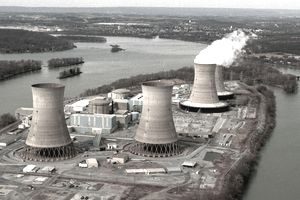
 With the statement of objection, the Union expressed a hopefulness that the new Congress taking office that January would show a greater commitment to protecting the integrity of the scientific process. Unfortunately, I don’t think that has been the case with that Congress, nor with any others. Manipulating science to control the population seems to be the political way of doing things.
With the statement of objection, the Union expressed a hopefulness that the new Congress taking office that January would show a greater commitment to protecting the integrity of the scientific process. Unfortunately, I don’t think that has been the case with that Congress, nor with any others. Manipulating science to control the population seems to be the political way of doing things.
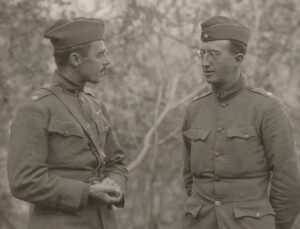
 Today is a very important day. It is not about having a three-day weekend, a barbecue, picnic, or even a holiday camping trip. It’s not that these things are bad, or even wrong. It’s really just a matter of remembering and showing respect for those men and women who went to war and didn’t come home alive. Those men and women gave their all, their very lives to keep us and so many others around the world safe. They could have stayed home. There isn’t a draft anymore, although many were drafted, because in a war the likes of the world wars, and others, the men and women were dying so fast that the volunteers couldn’t keep up. So, they held a draft, and those men, because at that time women weren’t drafted, did their duty, and went to fight the war, many losing their lives in the process.
Today is a very important day. It is not about having a three-day weekend, a barbecue, picnic, or even a holiday camping trip. It’s not that these things are bad, or even wrong. It’s really just a matter of remembering and showing respect for those men and women who went to war and didn’t come home alive. Those men and women gave their all, their very lives to keep us and so many others around the world safe. They could have stayed home. There isn’t a draft anymore, although many were drafted, because in a war the likes of the world wars, and others, the men and women were dying so fast that the volunteers couldn’t keep up. So, they held a draft, and those men, because at that time women weren’t drafted, did their duty, and went to fight the war, many losing their lives in the process.
I happened to watch a movie the other night, called “The Lost Battalion.” It was a true event from World War I. It was called “The Lost Battalion” because of the heavy losses incurred by the nine companies of the US 77th Division of roughly 554 men, who were isolated by German forces during World War I after an American attack in the Argonne Forest in October 1918. Of the 554 men, roughly 197 were killed in action and approximately 150 missing or taken prisoner before the 194 remaining men were rescued. These men were not lost. The US Army knew where they were…pretty much, but they were lost, because it was expected that all would be lost, and that was almost the case. During the battle, the men had to leave the trenches and run, almost completely unprotected at the Germans entrenched on the other side of the hill. The battle was gruesome, and the movie was quite graphic. I’m sure many people would say that they shouldn’t have shown so much blood and mutilation, but if they “sugar coat” it, do we really understand how horrible war is?
The battalion was led by Major Charles W Whittlesey who survived the attack, but refused to be transported out ahead of his men, choosing instead to walk out with them. When the attack began in the Argonne, the 77th Division was under the belief that French forces were supporting their left flank and two American units including the 92nd Infantry Division were supporting their right. Within the 77th sector, some units, including Whittlesey’s 308th Infantry, were making significant headway, but unbeknownst to Whittlesey’s unit, the units to their left and right had been stalled, and actually retreated. Without this knowledge, the 77th Battalion moved beyond the rest of the Allied line and found themselves surrounded by German forces. As I watched the movie, my first thought was, why don’t they stay and fight from the trenches? Of course, I quickly realized that you can’t take the hill from the trench. These men had to dig deep within themselves, and leave the safety of the trench, knowing that they would most likely die right there, if the Allies were to have the victory. That is 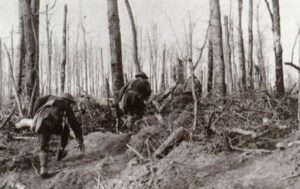
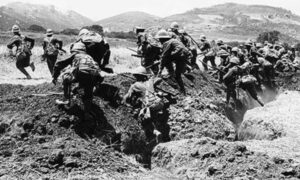 giving your all!! That is what Memorial Day is really all about…the men and women who charged the enemy, accepting their fate of almost certain death, to win the war and protect our freedoms. These men and so many like them are the heroes of this day…a fact that we must never forget. I thank every fallen soldier this day, because you gave your all…selflessly and willingly, and you will never be forgotten!!
giving your all!! That is what Memorial Day is really all about…the men and women who charged the enemy, accepting their fate of almost certain death, to win the war and protect our freedoms. These men and so many like them are the heroes of this day…a fact that we must never forget. I thank every fallen soldier this day, because you gave your all…selflessly and willingly, and you will never be forgotten!!
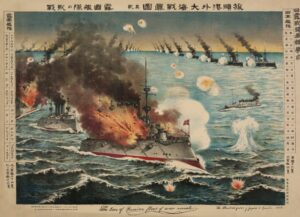 It’s a difficult thing to discover that, as a nation, with a naval fleet, what you thought was strong, is simply not enough. This was the position that Russia found themselves during the Russo-Japanese War, when the Russian Baltic Fleet is nearly destroyed at the Battle of Tsushima Strait. The defeat was devastatingly decisive. Only 10 of the 45 Russian warships were able to escape to safety. The Russian leaders had to face the fact that further resistance against Japan’s imperial designs for East Asia was hopeless. They could not do it alone.
It’s a difficult thing to discover that, as a nation, with a naval fleet, what you thought was strong, is simply not enough. This was the position that Russia found themselves during the Russo-Japanese War, when the Russian Baltic Fleet is nearly destroyed at the Battle of Tsushima Strait. The defeat was devastatingly decisive. Only 10 of the 45 Russian warships were able to escape to safety. The Russian leaders had to face the fact that further resistance against Japan’s imperial designs for East Asia was hopeless. They could not do it alone.
The Japanese wanted to divide Manchuria and Korea into spheres of influence, but the plan was rejected by the Russians on February 8, 1904, following the Russian rejection of a Japanese plan to Japan launched a surprise naval attack against Port Arthur, a Russian naval base in China. With that attack, the war was on. The Battle of Port Arthur on February 8 and 9, 1904 marked the commencement of the Russo-Japanese War. The Japanese, in true Japanese style attacked when all the ships were still in port, but I guess that is how war is. It reminds me of Pearl Harbor, of course. The attack was a surprise night attack by a squadron of Japanese destroyers on the neutral Russian fleet anchored at Port Arthur, Manchuria. They continued with another attack the following morning. The fighting would continue until 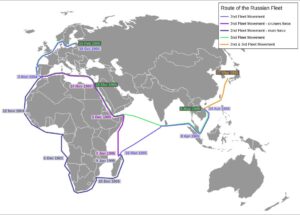 May 1904. While the attack on Port Arthur ended inconclusively, the war was without a doubt, a Japanese victory. The Battle of Port Arthur was the first major battle of the 20th century, and the Russian fleet was decimated. During the war that began then, Japan won a series of decisive victories over the Russians, who underestimated the military potential of its non-Western opponent. In January 1905, the continued attacks resulted in the fall of Port Arthur to Japanese naval and ground forces under Admiral Heihachiro Togo, and by March Russian troops were defeated at Shenyang, China, by Japanese Field Marshal Iwao Oyama. Then came the Battle of Tsushima Strait, fought on May 27 and 28, 1905 (May 14 and 15 in the Julian calendar that Russia used at that time) in the Tsushima Strait located between Korea and southern Japan.
May 1904. While the attack on Port Arthur ended inconclusively, the war was without a doubt, a Japanese victory. The Battle of Port Arthur was the first major battle of the 20th century, and the Russian fleet was decimated. During the war that began then, Japan won a series of decisive victories over the Russians, who underestimated the military potential of its non-Western opponent. In January 1905, the continued attacks resulted in the fall of Port Arthur to Japanese naval and ground forces under Admiral Heihachiro Togo, and by March Russian troops were defeated at Shenyang, China, by Japanese Field Marshal Iwao Oyama. Then came the Battle of Tsushima Strait, fought on May 27 and 28, 1905 (May 14 and 15 in the Julian calendar that Russia used at that time) in the Tsushima Strait located between Korea and southern Japan.
While hope seemed lost, Russian Czar Nicholas II still hoped that the Russian Baltic fleet under Admiral Zinovy Rozhestvensky would be able to challenge Admiral Togo’s supremacy at sea. Unfortunately, during the two-day Battle of Tsushima Strait, more than 30 Russian ships were sunk or captured by the superior Japanese warships. Japanese superiority was made abundantly clear. By August, with a stunning string of Japanese victories, Russia became convinced that they would have to accept the peace treaty mediated by US President 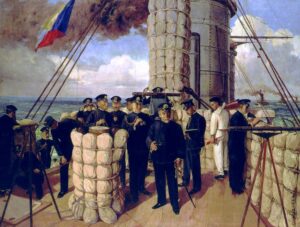 Theodore Roosevelt at Portsmouth, New Hampshire…a treaty that won Roosevelt the Nobel Peace Prize for this achievement. In the Treaty of Portsmouth, Russia recognized Japan as the dominant power in Korea and gave up Port Arthur, the southern half of Sakhalin Island, and the Liaotung Peninsula to Japan.
Theodore Roosevelt at Portsmouth, New Hampshire…a treaty that won Roosevelt the Nobel Peace Prize for this achievement. In the Treaty of Portsmouth, Russia recognized Japan as the dominant power in Korea and gave up Port Arthur, the southern half of Sakhalin Island, and the Liaotung Peninsula to Japan.
Japan emerged from the conflict as the first modern non-Western world power and set its sights on greater imperial expansion. Japan would have to be dealt with another day, and by another power. As for Russia, the military’s disastrous performance in the war sparked the Russian Revolution of 1905.

